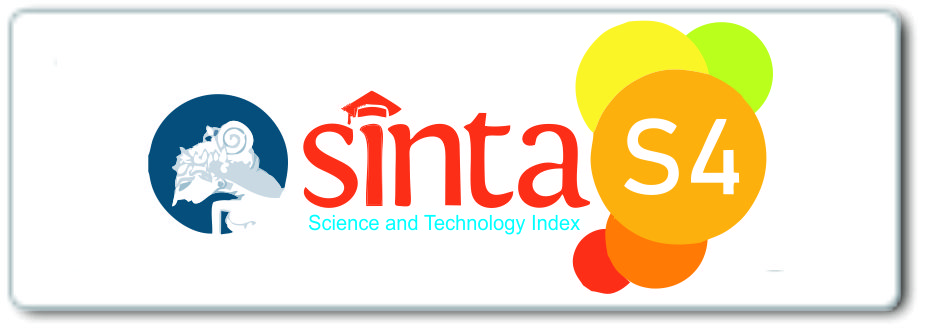Citra Diri dan Popularitas Artis
DOI:
https://doi.org/10.29240/jdk.v1i2.104Keywords:
Self-image, Artists’Popularity, Mass MediaAbstract
The purpose of this study is to determine how artist's self-image is displayed in media, and how an artist prepares him/herself. This study also aims to know how the artists understand their popularity as the result of news delivered by journalists in mass media. The method used in this study is a qualitative method with dramaturgicaltheoryapproach. Dramaturgy is actually under a larger perspective which is often called by phenomenological perspective or interpretive perspective. The results of this study indicate that self-image for the artist determines the impression to be formed in the mass media. The better self-image displayed, the bigger chance to get a good impression will be achieved. Before dealing with a reporter for an interview, the artist did some preparations, such as be neat and dressing up, cool their self down in order to be in a good or stable emotions, and have a discussion with the management to show a positive self-image in front of journalists. Artists fullyunderstandthe meaning of popularity for themselves.The positive popularity will also give a positive effect. Meanwhile, if they gained negative popularity, it will impact to contract termination with third parties, loss of earning opportunities through advertisement,off air, losing fans,etc. This displayed self-image, if delivered positively by journalists in news, it will give a positiveDownloads
References
Ardianto, Elvinaro. dkk. Komunikasi Massa Suatu Pengantar (Edisi Revisi),
(Bandung: Simbiosa Rekatama Media, 2007)
Blumer, Herbert. Simbolic Interactionism, Perspective and Method. Los Angeles,
(California, Prentice-Hall, Inc. 1969)
Creswel, John W Qualitative Inquiry and Research Design, Choosing Among Five
Traditions, (California. Sage Publications, Inc. 1998)
Effendy, Onong Uchjana. Ilmu Komunikasi Teori dan Praktek, (Bandung: Remaja
Rosdakarya, 1992)
Fisher, Aubrey. Teori-teori Komunikasi, (Bandung: Remaja Rosdakarya, 1990)
Goffman, Erving. The Presentation of Self In Everyday Life{ New York.: Doubleday,
Haryatmoko Etika Komunikasi, Manipulasi Media, Kekerasan, dan Pornografi.
(Yogyakarta: Kanisius, 2007)
Kuswarno, Engkus. Fenomenologi, Konsepsi, Pedoman, dan Contoh Penelitian,
(Bandung: Widya Padjadjaran, 1999)
Littlejohn and Foss, Theoris of Human Communication, 9th Edition. Bellmont,
(California: Thomson Wadsworth, tt)
Moleong, Lexy J. Metodologi Penelitian Kualitatif, (Bandung: PT Remaja Rosda
Karya, 1990)
Mulyana, Deddy. Metodologi Penelitian Kualitatif: Paradigma baru Ilmu Komunikasi dan
Ilmu Sosial Lainnya, (Bandung: PT Remaja Rosdakarya, 2006)
-------, Ilmu Komunikasi, Suatu Pengantar (Bandung: PT Remaja Rosdakarya, 2005)
Poloma, Margareth M. Sosiologi Kontemporer, (Jakarta: PT Raja Grafindo Perkasa,
| Jurnal Dakwah dan Komunikasi Vol. 1 No. 2, 2016
Rakhmat, Jalaluddin. Metode Penelitian Komunikasi. (Bandung: PT Remaja
Rosdakarya, 2001)
Schutz, Alfred. The Phenomenology of the Social World, (Illinois: Northwetern
University Press, 1967)
Severin and Tankard Jr. Teori Komunikasi, Sejarah, Metode, dan Terapan di Dalam
Media Massa, (Jakarta. Kencana Prenada Media Group, 2007)
Sunaryo, Djoenaesih. Opini Publik, (Yogyakarta: Liberty, 1996)
Sumber lain:
Panduan Penyusunan dan Penulisan Tesis & Disertasi. Bandung: Program
Pascasarjana Tahun Akademik 2012– 2013.
Kamus Lengkap Indonesia – Inggris, Inggris – Indonesia. 1980. Bandung. Hasta
Downloads
Published
Issue
Section
License
Authors who publish with Jurnal Dakwah dan Komunikasi agree to the following terms:- Authors retain copyright and grant the journal right of first publication with the work simultaneously licensed under a Creative Commons Attribution-NonCommercial-ShareAlike 4.0 International License (CC BY-NC-SA 4.0) that allows others to share the work with an acknowledgment of the work's authorship and initial publication in this journal.
- Authors are able to enter into separate, additional contractual arrangements for the non-exclusive distribution of the journal's published version of the work (e.g., post it to an institutional repository or publish it in a book), with an acknowledgment of its initial publication in this journal.
- Authors are permitted and encouraged to post their work online (e.g., in institutional repositories or on their website) prior to and during the submission process, as it can lead to productive exchanges, as well as earlier and greater citation of published work (See The Effect of Open Access).


